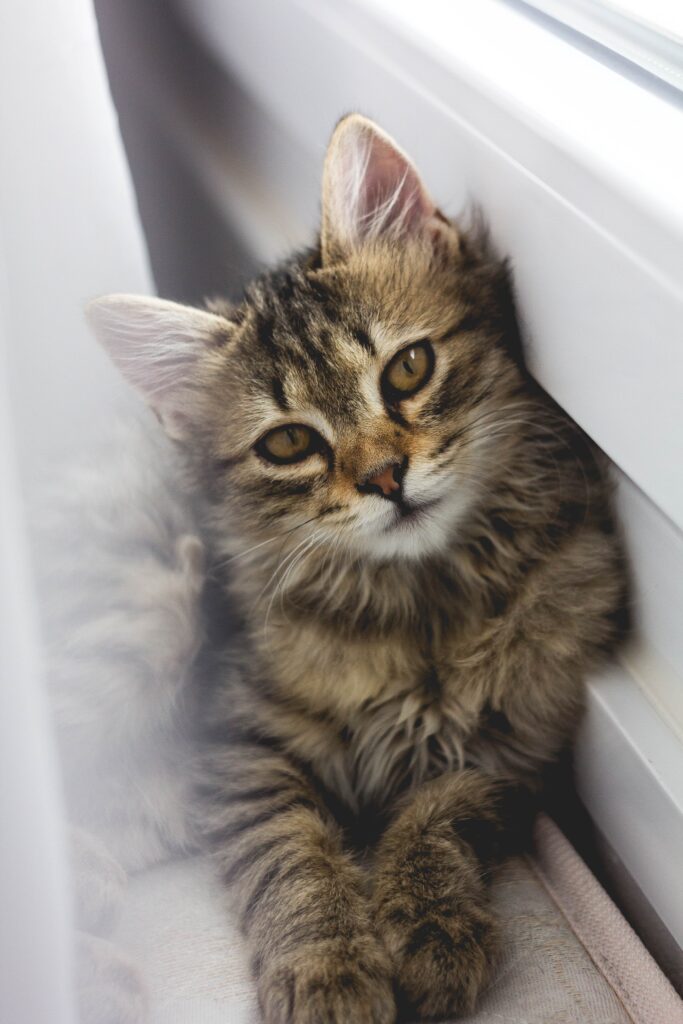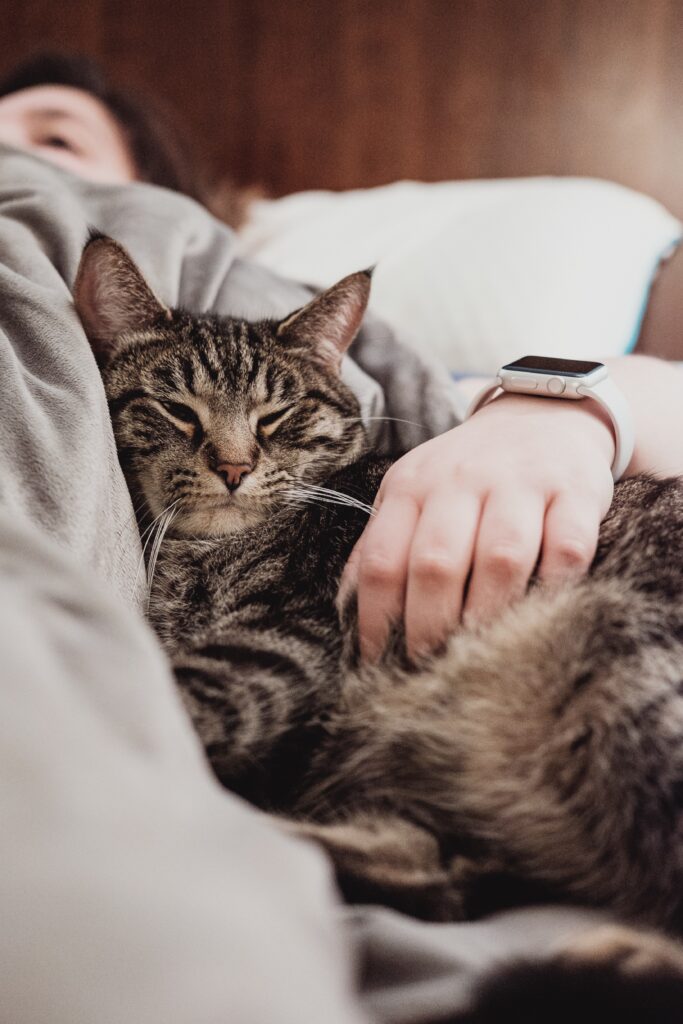
Imagine this scenario: you’re cuddled up on the couch, enjoying some quality bonding time with your beloved feline friend. Suddenly, out of nowhere, your cat lashes out and sinks its teeth or claws into your hand. Ouch! Dealing with an aggressive or biting cat can be both challenging and confusing. In this article, we will explore some practical tips and strategies to help you navigate this difficult situation with grace and expertise. So, if you’re ready to gain a deeper understanding of your feline companion’s behavior and learn effective ways to handle aggression or biting, read on!

Table of Contents
Understanding the Root Cause of Aggression or Biting
The Importance of Identifying Triggers
When it comes to dealing with aggression or biting in cats, the first step is to understand the root cause of these behaviors. Cats can exhibit aggression for various reasons, such as fear, anxiety, territoriality, or even medical issues. Identifying the triggers that lead to aggressive behavior is crucial in effectively addressing and managing it. Observe your cat carefully to determine if there are certain situations, actions, or stimuli that provoke the aggression.
Differentiating between Playful and Aggressive Behavior
It is essential to differentiate between playful behavior and true aggression when dealing with your cat’s actions. Cats often engage in playfully aggressive behavior, such as gentle biting or swatting during playtime. However, if the behavior escalates into intense biting, scratching, or hissing, it may indicate true aggression. Understanding the difference will help you respond appropriately to your cat’s behavior.
Addressing Fear and Anxiety in Cats
Fear and anxiety can contribute significantly to a cat’s aggression. Understanding and addressing these underlying emotions is crucial in managing aggressive behavior. If your cat is fearful or anxious, identify the triggers that cause these emotions and work towards desensitization and counterconditioning techniques. Creating a calm and safe environment, implementing behavior modification techniques, and providing mental and physical stimulation can help alleviate fear and anxiety in cats.
Consulting a Professional
When to Seek Veterinary Advice
If your cat’s aggressive behavior is persistent, frequent, or escalating, it is essential to seek veterinary advice. A thorough examination by a veterinarian can help identify any underlying medical issues that may be contributing to the aggression. Pain or discomfort, hormonal imbalances, or neurological conditions can sometimes trigger aggression in cats. A veterinarian will be able to provide guidance and recommend appropriate treatment options based on a thorough evaluation.
Finding a Qualified Animal Behaviorist
In cases where aggressive behavior persists, despite addressing any medical issues, consulting a qualified animal behaviorist can be beneficial. Animal behaviorists specialize in studying and understanding animal behavior, including aggression in cats. They can assess your cat’s behavior, help identify triggers, and develop a customized behavior modification plan to address the aggression effectively. Look for behaviorists who have relevant certifications and experience in working with cats.
The Benefits of Professional Guidance
Seeking professional guidance for managing your cat’s aggression can be incredibly helpful. Professional behaviorists can provide you with a comprehensive understanding of your cat’s behavior, guide you through the necessary steps to address the aggression, and offer ongoing support and advice. Remember, every cat is unique, and what works for one cat may not work for another. Professional guidance ensures that you receive tailored strategies and techniques to address your specific cat’s aggression.
Creating a Safe and Calm Environment
Providing an Adequate Hiding Space
Creating a safe and calm environment for your cat is essential in reducing aggression. Cats often seek hiding spaces when they feel stressed or threatened. Ensure your home has adequate hiding spots such as caves, covered cat beds, or tall scratching posts with hiding nooks. These hiding spaces provide your cat with a secure retreat when they need a break or feel anxious.
Ensuring a Consistent Daily Routine
Cats thrive on routine, and any disruptions or changes can cause stress and anxiety, leading to aggression. Establishing a consistent daily routine for feeding, playtime, and sleep can help reduce anxiety in cats. Consistency provides a sense of security and predictability, which can have a calming effect on your cat’s behavior.
Avoiding Overstimulation
Overstimulation can trigger aggression in cats. Understand your cat’s limits and avoid pushing them beyond their comfort zone. Pay attention to their body language and signals that indicate they may be getting overwhelmed. By avoiding overstimulation, you can prevent aggressive outbursts and maintain a peaceful environment for your cat.
Using Positive Reinforcement Techniques
Rewarding Desirable Behavior
Positive reinforcement is a powerful tool in shaping a cat’s behavior. When your cat displays desirable behaviors, such as calmness, non-aggressive play, or appropriate interaction, reward them with treats, praise, or gentle strokes. This positive reinforcement helps reinforce the behavior you want to see more of and encourages your cat to repeat it.
Implementing Clicker Training
Clicker training is an effective technique that involves using a clicker and treats to associate a sound (the click) with reward. You can use clicker training to teach your cat alternative behaviors and redirect their aggression towards more appropriate outlets. Consult a professional trainer or behaviorist to learn how to effectively implement clicker training techniques with your cat.
Redirecting and Distracting Techniques
When your cat displays signs of aggression, redirection and distraction can be useful techniques to manage their behavior. Provide your cat with appropriate toys or engaging activities that divert their attention away from the trigger of aggression. By redirecting their focus and energy, you can help diffuse their aggression and prevent further escalation.

Avoiding Physical Punishment
Negative Effects of Physical Discipline
Physical punishment, such as hitting or spanking, is not only ineffective but can also have severe negative consequences for your cat’s well-being and the human-animal bond. Physical discipline can instill fear, anxiety, and aggression in cats, exacerbating the problem rather than resolving it. It is essential to avoid any form of physical punishment when dealing with your cat’s aggressive behavior.
Positive Alternatives to Physical Punishment
Instead of physical punishment, focus on positive reinforcement techniques to modify your cat’s behavior. Rewarding desirable behaviors, redirecting aggression, and providing mental and physical stimulation are all effective methods for managing aggression without resorting to physical punishment. These positive alternatives not only yield better results but also help strengthen the bond between you and your cat.
The Role of Patience and Consistency
Addressing and managing aggression in cats requires patience and consistency. Rome wasn’t built in a day, and changes in behavior take time. Remember to remain consistent with your training techniques, stick to the behavior modification plan, and be patient with your cat’s progress. Each small step forward is a positive sign, and with time and dedication, you can help your cat overcome their aggression.
Utilizing Behavior Modification Techniques
Counterconditioning and Desensitization
Counterconditioning and desensitization techniques are commonly used to modify aggressive behavior in cats. These techniques involve gradually exposing your cat to the triggers that provoke aggression while simultaneously providing positive experiences. The goal is to change your cat’s emotional response from fear or anxiety to relaxation and confidence. This process should be done under the guidance of a certified behaviorist to ensure safety and efficacy.
Gradual Exposure to Triggers
When implementing behavior modification techniques, it is crucial to expose your cat to problematic triggers gradually. Gradual exposure allows your cat to become more comfortable with the trigger and reduces the likelihood of triggering aggression. Start with minimal exposure and gradually increase the intensity or duration while monitoring your cat’s response. If your cat shows signs of stress or aggression, take a step back in the exposure process and proceed at a pace that suits their comfort level.
Professional Assistance with Behavior Modification
Behavior modification can be a complex process, and sometimes professional assistance is necessary to ensure its success. An experienced animal behaviorist can guide you through the steps of behavior modification, provide feedback, and adjust the plan as needed. They can also address any challenges or setbacks that may arise during the process, ultimately increasing the chances of successfully managing your cat’s aggression.

Providing Adequate Mental and Physical Stimulation
The Importance of Interactive Play
Interactive play sessions are essential for keeping your cat mentally and physically stimulated. Engaging with your cat through interactive toys, using feather wands, laser pointers, or puzzle toys not only provides exercise but also channels their energy into positive outlets. Regular interactive play sessions can help reduce stress and anxiety, lowering the likelihood of aggressive behavior.
Toys and Environmental Enrichment
In addition to interactive play, providing your cat with a variety of toys and environmental enrichment is essential. Toys that simulate hunting or stalking behavior, such as puzzle feeders or treat-dispensing toys, can keep your cat mentally engaged and help alleviate boredom. Additionally, offering scratching posts, vertical spaces, and window perches can provide environmental enrichment and create a stimulating, stress-free environment for your cat.
Enforcing Regular Exercise
Physical exercise is vital for a cat’s overall well-being and can contribute significantly to reducing aggression. Cats have natural hunting instincts, and regular exercise helps them release pent-up energy. Engage your cat in play sessions that involve chasing, pouncing, and climbing. Providing opportunities for regular exercise helps keep your cat physically active, mentally stimulated, and less prone to aggressive outbursts.
Identifying and Managing Pain or Medical Issues
Signs of Discomfort or Illness
Sometimes, aggression in cats can be a result of underlying pain or medical issues. Cats are masters at masking discomfort, so it is crucial to be vigilant for signs of physical distress or illness. Pay attention to any changes in appetite, litter box habits, grooming patterns, or general behavior. If you notice anything unusual, consult a veterinarian for a thorough examination.
Consulting a Veterinarian
If you suspect that your cat’s aggression may be related to pain or medical issues, consult a veterinarian. A medical evaluation can help identify any underlying conditions that may contribute to the aggression, such as dental problems, arthritis, or urinary tract issues. Treating the underlying medical conditions can often alleviate the aggression or reduce its intensity.
Treating Underlying Medical Conditions
Once a medical issue has been identified, your veterinarian will develop a treatment plan tailored to your cat’s specific needs. This may include medication, dietary changes, or specialized care. By addressing any underlying medical conditions, you can help alleviate your cat’s pain or discomfort and potentially reduce their aggressive behavior.
Implementing Proper Handling Techniques
Understanding Cat Body Language
Understanding the subtle cues and body language of cats is crucial when handling them, especially if they have a history of aggression. Cats communicate through their body language, and recognizing signs of discomfort or stress can help prevent aggressive responses. Look for signals such as tail twitching, flattened ears, dilated pupils, or vocalizations, which may indicate your cat’s mood or level of comfort.
Approaching the Cat with Patience and Care
Approaching an aggressive cat requires patience and care. Move slowly and avoid sudden movements that could startle or provoke the cat. If your cat shows signs of aggression or discomfort, such as growling or hissing, give them space and allow them to retreat to a safe area. Always respect your cat’s boundaries and provide them with the time they need to feel more comfortable.
Avoiding Aggravating Triggers during Handling
When handling an aggressive or easily triggered cat, it is essential to avoid any known triggers that may escalate their aggression. If your cat dislikes being touched in a specific area or reacts negatively to certain handling techniques, respect their boundaries and find alternative approaches. By avoiding triggers during handling, you can help create a more positive experience and prevent any aggressive reactions.
Seeking Professional Intervention if Necessary
When Aggression Persists or Escalates
In some cases, despite your best efforts, a cat’s aggression may persist or even escalate. If your cat’s aggression becomes increasingly concerning, poses a significant risk to you or others in your household, or leads to severe injuries, it is essential to seek professional intervention. A certified animal behaviorist or veterinarian with expertise in behavior can help assess the situation, provide further guidance, and recommend appropriate interventions.
The Role of Medication in Managing Aggression
In certain situations, medication may be necessary to manage a cat’s aggression. Medications can help alleviate anxiety, reduce stress, or stabilize mood in cats. However, prescribing and administering medication should be done under the guidance of a veterinarian or behaviorist. They will assess the cat’s specific needs, recommend the most suitable medication, and monitor the cat’s response to ensure its effectiveness and safety.
Considering Rehoming as a Last Resort
Rehoming should always be considered as a last resort, and only if all other options have been exhausted. If your cat’s aggression persists despite professional intervention, and the safety and well-being of everyone involved are at risk, rehoming may be necessary. In such cases, consult with reputable rescue organizations or animal shelters to ensure your cat is placed in a loving and experienced home where their special needs can be understood and addressed.
Dealing with a cat that is aggressive or bites can be challenging, but with patience, understanding, and professional guidance if needed, these behaviors can be managed effectively. By identifying triggers, creating a safe environment, using positive reinforcement techniques, and addressing any underlying medical issues, you can help your cat overcome their aggression and experience a happier, healthier life. Remember, every cat is unique, so it’s crucial to tailor your approach to suit your specific feline companion.
